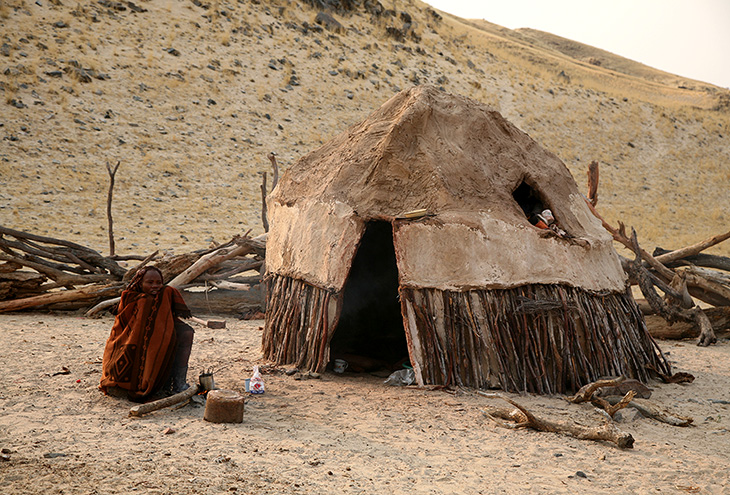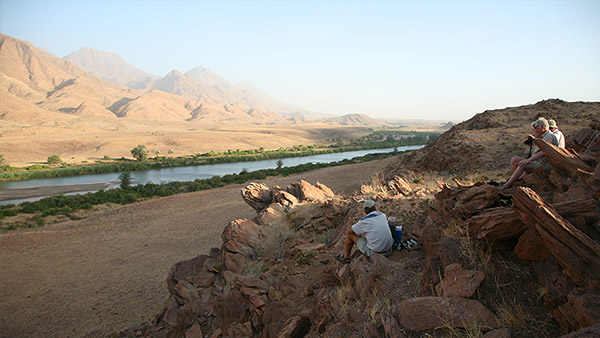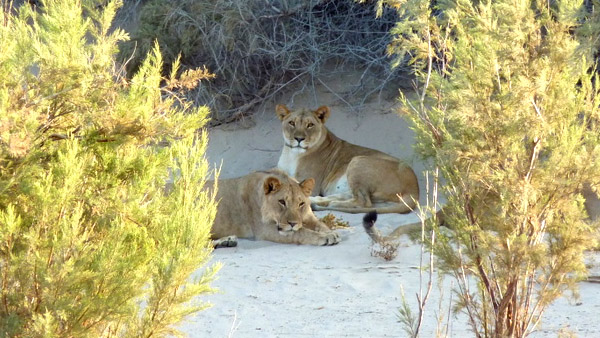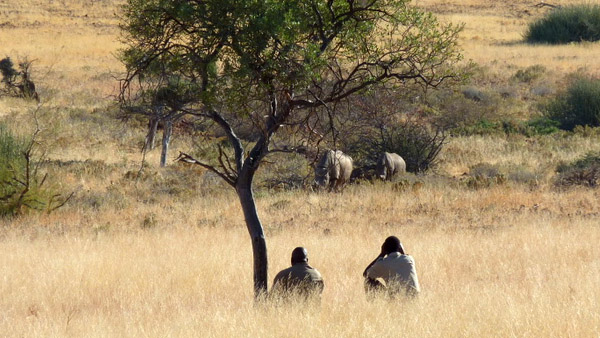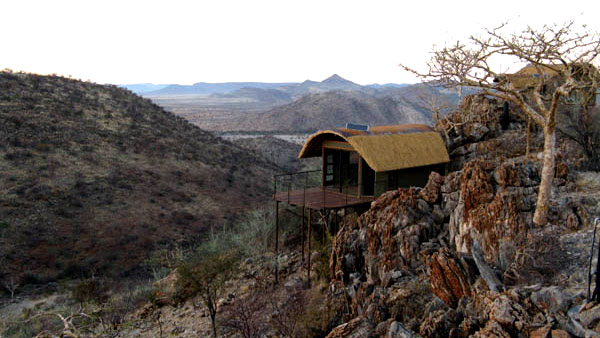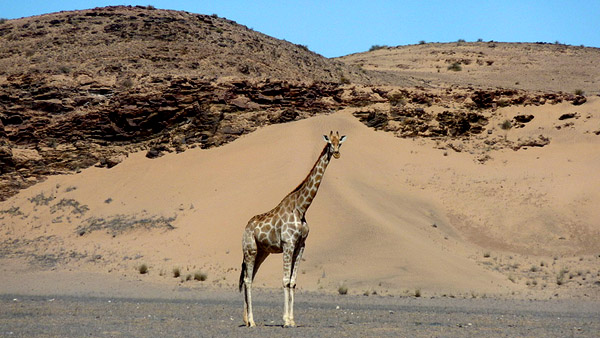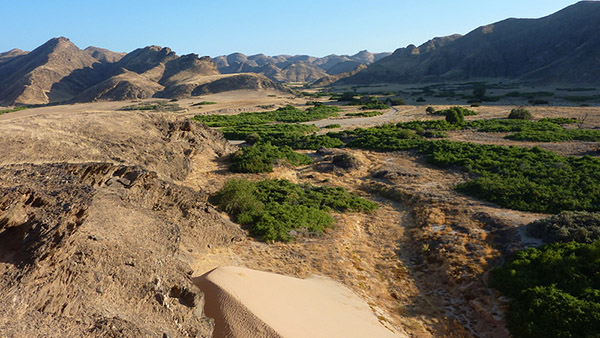“Tjike!”
It’s my first attempt at a Himba greeting, and my accent and intonation are probably totally wrong. But Mbinge, who I’ve just met, gives me a broad, gap-toothed grin and beckons me inside her house.
Mbinge constructed this shelter herself, house-building being the exclusive responsibility of women in these parts. It’s a small, brown, igloo-shaped hut made from flexible mopane branches, supported by a central pole. The outside is rendered with cattle dung and earth, baked hard in the heat. The open doorway is tiny. As I stoop to enter, my eyes, full of the glare of the morning sun, see nothing but darkness. Instead, I take in the jangle of Mbinge’s heavy beads and the soft rustle of her goatskin skirts. Finding myself a perch, I feel coarse hide under my palms and my nose detects a sweet, pungent aroma I can’t quite place.
